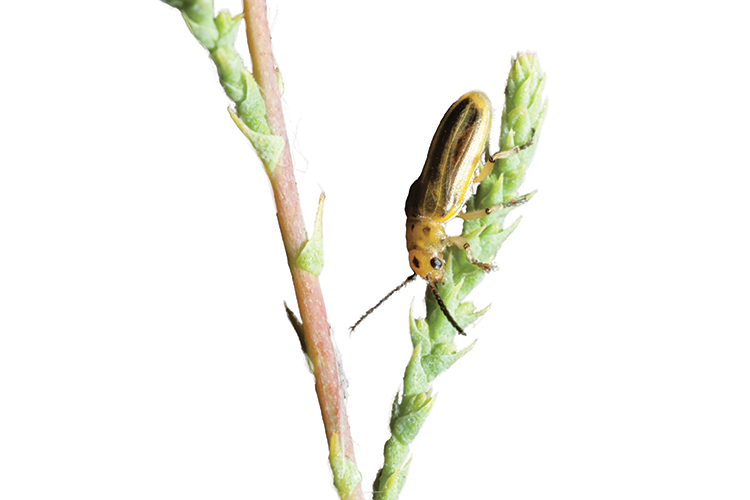Home > Colorado > Colorado Crops & Livestock > Bug Ranching
Bug Ranching
In partnership with: Colorado Department of Agriculture
 A hungry insect is helping protect Colorado’s water resources.
A hungry insect is helping protect Colorado’s water resources.
The tiny tamarisk beetle eats the leaves of the tamarisk tree, also known as salt cedars tree, and causes the invasive plant to wither and die. The tamarisk, brought to North America in the 1800s from Europe, grows primarily around streams and rivers and has a thirst that threatens the water supply that serves the state’s farms and ranches.
To date, the tiny beetle has helped defoliate approximately 40,000 acres of tamarisk along Colorado waterways. This has been vital to protecting the arid state since it’s estimated that each plant can absorb 10 to 15 gallons of water every day.
The tamarisk beetle program is just one success of the Colorado Department of Agriculture’s Palisade Insectary, the oldest and largest of its kind in the U.S. The Insectary conducts research and helps identify insects and mites to control invasive insects and plants that can harm crops and livestock. The insects are then bred, managed, and raised at the Insectary, similar to livestock on a ranch.
“Invasive pests are typically not native to the U.S. Usually, in a natural setting, every plant and insect has natural enemies, but when they come over from other continents, they’re often introduced without those enemies,” says Insectary Manager Dan Bean. “When this happens, there’s nothing around to control them, so the balance goes haywire, and they become a serious problem.”
Fortunately, these problems can be resolved. After at least 10 years of extensive testing, biological control (biocontrol) agents are distributed to farmers, ranchers, agencies and municipalities to attack targeted invasive pests. There are also steps in place to ensure the agents will not harm non-target plants or insects and cause further problems.
Although Bean says biocontrol agents never completely eliminate pests, they are an alternative to pesticides. “There are multiple benefits to using biocontrol agents. If you’re an organic grower, you really don’t have pesticide options, but you can use biocontrol because it’s natural,” Bean says. “It’s also a good option for people who aren’t organic but want to reduce pesticide use.”
Pest management efforts by the Insectary have proven successful since the 1940s, and today, it releases approximately 20 species of biocontrol agents each year. One of those is a beetle that bicyclists will love, because it targets the puncturevine weed, which sprouts the small thorns that pierce bike tires and feet across Colorado.
“We’re essentially reconnecting or reintroducing the invasive pest problem to its natural control,” Beansays.



